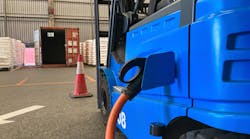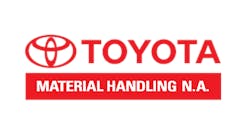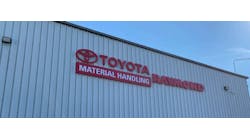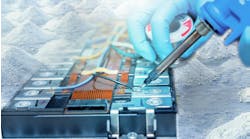Understanding the Total Cost of Ownership for Li-ion Forklift Batteries
When it comes to choosing the right battery for your forklift, pallet jack or reach truck, there are a few things that you need to consider. Many business owners are concerned about the upfront cost of a battery. However, the upfront cost is just one piece of the puzzle. To know the real cost of a battery system, you need to consider the total cost of ownership (TCO).
In this article, we will explore the TCO of Lithium-ion (Li-ion) forklift batteries to help you make an informed decision for your business. Forklifts, the workhorses of the industrial world, have seen a significant shift in the type of energy they use. Conventional lead-acid batteries are being gradually replaced by Li-ion batteries. There’s a lot of buzz about the advantages of Li-ion technology, but it’s important to get a comprehensive understanding of the total cost of ownership.
TCO is the sum of all direct and indirect costs incurred in owning and operating a piece of equipment. When it comes to forklift batteries, TCO must consider the following elements:
Initial Cost
This is the upfront cost of purchasing a forklift battery. Li-ion batteries cost more than lead-acid batteries, but their longer life and efficiency outweigh the higher initial cost. The price of a Li-ion battery can cause a bit of sticker shock, as they cost significantly more upfront than their lead-acid counterparts.
It’s not uncommon for the initial cost of a Li-ion battery to be twice or three times that of lead acid. However, it’s crucial to remember that the total cost of ownership isn’t solely about the initial investment.
Maintenance Cost
Maintenance is an essential element of TCO. Li-ion batteries require less maintenance than lead-acid batteries. Maintenance costs for lead acid include the cost of cleaning, water filling, acid neutralization, battery equalization, and battery regeneration, among others. Li-ion batteries require minimal maintenance. Li-ion batteries do not require regular watering, acid neutralization, or equalization.
Once a Li-ion battery is set up, it will require only occasional checks via the CANBus communication to ensure the fuel gauge and other parameters are calibrated and set properly. This means more uptime for your forklift, which can result in higher productivity and lower maintenance costs.
Charging Time
A key advantage to Li-ion batteries is the short charge time. Both lead-acid and Li-ion batteries are first charged at a constant current and then topped off with a constant voltage. For lead-acid the constant current phase is recommended to be C/5, or 5 hours to full capacity, and the constant voltage phase starts at 80%. For Li-ion batteries, the constant current phase is at a 1C rate, or one hour to full charge, and the constant voltage phase starts at 98%. This results in a charge time for lead-acid of about 8 hours in total and a little over an hour for Li-ion. This means that Li-ion batteries can be opportunity charged during breaks with no real downtime for the forklift.
While lead-acid batteries are often opportunity charged at higher rates than the manufacturer’s recommendation, it is still significantly slower, and greatly reduces cycle life, voiding the warranty. If an enterprise operates with multiple shifts, the best way to maintain the cycle life of a lead acid battery is to swap it out with one battery per shift. With three batteries per truck, one is charged, one is used and one is resting, and each is used once in an eight hour period. A single Li-ion battery can do the work of three lead acid batteries.
Cycle Life
The cycle life of a battery is the total number of times it can be charged and discharged before it needs replacement when the capacity drops to around 60% or 70% of the original rated capacity. Li-ion batteries can be charged and discharged several thousand times, depending on the manufacturer's specifications, while lead acid batteries generally last for 500-1000 cycles. Therefore, Li-ion batteries have a longer life expectancy than lead-acid batteries and Li-ion batteries last 5 to 10 years with typical usage, while lead-acid batteries last 3 to 5 years or less. Li-ion batteries have a significantly longer service life, often lasting twice as long as lead-acid batteries.
Infrastructure Cost
Lead-acid batteries require regular watering, equalizing charges and acid cleanup. These maintenance tasks cost time and money and can lead to production downtime, but they also require significant infrastructure. Proper ventilation and special flooring and drains are required. There is also a need for safety equipment such as emergency showers and eye wash stations. Li-ion batteries are completely contained and require none of this safety and maintenance equipment.
In addition, because of the fast charge time and long cycle life of the battery, Li-ion batteries do not need to be swapped and can last the lifetime of the lift truck, so battery rooms for charging and storage can be eliminated.
Productivity Impact
Li-ion batteries have a lower impedance than lead-acid and can be charged in a shorter amount of time than lead-acid batteries. This means less downtime for your equipment, resulting in increased productivity. With the ability to opportunity charge during breaks without damaging the battery, Li-ion batteries can reduce the downtime associated with battery changes. This increased productivity can significantly impact the bottom line, especially in multi-shift operations.
Energy Cost
Li-ion batteries have a much lower impedance than lead-acid batteries, so they dissipate less electricity as waste heat during charging. Therefore, Li-ion batteries are more energy-efficient than lead-acid batteries—98% vs 80%—which means they require less electricity to charge. This translates to lower electric utility costs. Li-ion batteries are more efficient at converting energy, which can lead to significant savings on electricity.
Environmental Impact
Environmental impact includes the cost of waste disposal, recycling and emissions. Considering the global shift towards more environmentally-friendly business practices, it’s worth noting that Li-ion batteries are more eco-friendly than lead-acid batteries. They last longer, require less power to charge, and don’t contain harmful lead, which requires government reporting.
The Bottom Line
The TCO of Li-ion forklift batteries is significantly better than that of lead-acid batteries. Although Li-ion batteries have a higher upfront cost, they last longer, require less maintenance, have a faster charging time, are more energy-efficient, and improve forklift performance. These factors can result in a lower TCO and higher ROI, making them a better investment in the long run.
Understanding the total cost of ownership of Li-ion batteries for forklifts can help businesses make informed decisions. While it might seem a significant investment initially, the long-term benefits and savings can make Li-ion batteries a worthwhile consideration for those looking to optimize their operations and embrace sustainable practices. Businesses that transition to Li-ion batteries for their forklifts can benefit from improved efficiency, decreased downtime and reduced environmental impact. Ultimately, this shift can pay off by significantly reducing the total cost of ownership over time.
Robin Schneider is director of marketing with Green Cubes Technology, a provider of Lithium-ion (Li-ion) power systems.



